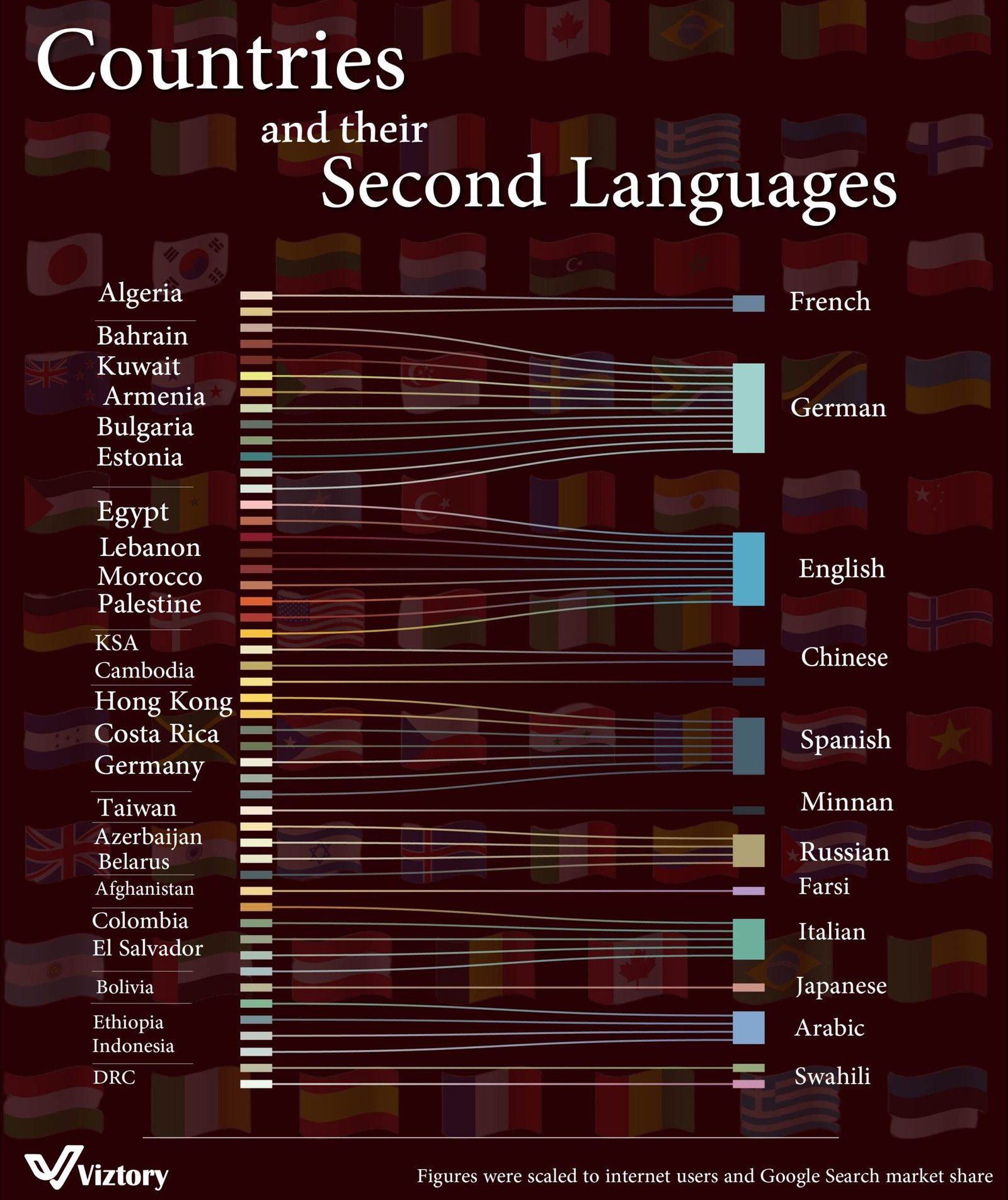Countries and Their Second Languages
Introduction
In an increasingly interconnected world, second languages play a critical role in shaping communication, education, and commerce. The infographic “Countries and Their Second Languages” presents a clear visual of which languages are most commonly used as second languages across various countries. This information is vital for marketers, educators, and global businesses looking to tailor their content and communication strategies effectively.
Key Observations
The chart shows that countries around the world adopt a variety of second languages, influenced by culture, colonization, economic ties, and digital exposure. For instance:
- French is a dominant second language in countries like Algeria and Morocco
- German is prevalent in several European and Middle Eastern countries
- English remains a widely adopted second language globally — from Lebanon to Hong Kong
- Other languages like Spanish, Russian, Chinese, and Japanese appear with notable frequency
Each of these choices reflects historical and socio-political ties, as well as modern global connectivity.
Cultural Impact & Consumer Behavior
Second languages are more than a communication tool — they shape how people consume content, engage with brands, and make purchasing decisions. A country where English is the second language, for example, is more likely to respond positively to English-based advertising or international products. Meanwhile, countries with strong ties to French or Spanish cultures may favor brands that localize in those languages.
By understanding second-language preferences, marketers can:
- Craft multilingual campaigns that resonate better
- Choose the right influencers and communication platforms
- Adapt tone, humor, and references that fit the cultural context
Strategic Marketing Value
For brands expanding globally, language is one of the first — and most powerful — bridges to building trust. Knowing that German is widely searched and spoken in Armenia and Bahrain may influence how a product is branded or advertised in those regions. Likewise, a Spanish-language version of a product site could increase engagement in Latin American countries.
Language is not just about translation. It’s about connection.
Conclusion
The infographic “Countries and Their Second Languages” is more than a linguistic chart — it’s a strategic map for marketers. In a globalized market, recognizing the second language of a country allows brands to communicate effectively, reach deeper into communities, and ultimately, convert awareness into loyalty.
For anyone in global marketing or international business, understanding the second language landscape is no longer optional — it’s essential.

